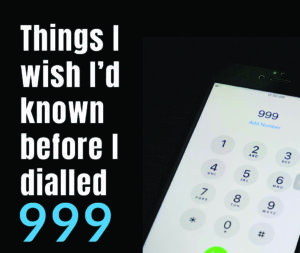EMPOWERING PARENTS
Little and often – KEEP SMILING
By Barbara Perry
Mention the words ‘front-loaded adverbial’ or ‘the bus-stop method’ to any parent who suddenly had to home school their child during the lockdown, and you can see the fear in their eyes. They shudder at the memories of wading blindly through a sea of ‘subordinating clauses’, ‘digraphs’ and ‘parenthesis’.
Vocabulary and terminology usually heard in schools suddenly became everyday language in your home, and as a parent, you were supposed to understand it. Classrooms moved to kitchens, dining rooms, lounges, and even bedrooms and everyone claimed their time on the one computer, now to be shared amongst all family members.
The Covid-19 pandemic has had a major effect on nearly all aspects of life. When life locked down in March 2020, teachers, parents and students had to face the challenge of maintaining learning processes via remote schooling. This required parents to function as homeschooling tutors for their child/children of all different ages and abilities, whilst maintaining their regular jobs.
Parents were often heard saying: “This is the most stressful experience I have ever encountered”, “I am the parent, not the teacher” and “I hate having to force my child to sit for hours, but I don’t want them to fall behind”.
Schools also had to quickly implement a variety of new alternatives to provide online education, including Google Meet, Microsoft Teams and Zoom. Evidence shows there were significant inconsistencies in terms of the provision and support offered by school settings to parents and pupils during the lockdown. As the time out of the classroom increased, pupils were expected to undertake work that had not been previously taught.
Under pressure
This pressure around education has led some parents to take a different approach. For some, their children are much more suited to learning from home, as formal settings are seen as a cause of distress and anxiety. The lockdown gave them time to do activities with their children that had previously been hard to fit in – baking, board games, bike rides and nature walks. Many parents have reported considering homeschooling their children permanently as a result of the lockdown experience.
However, for the majority, there was a collective parental sigh of relief when children finally returned to the classroom. The rhetoric changed from ‘keeping up’, to ‘catching up’ and the pace of the curriculum highlighted those children who had gaps in their learning. There is much discussion of this generation of children who have ‘fallen behind’ and debates are still rumbling on in the UK about extending school days and providing education during school holidays.
As life has slowly returned to normal, the children whose learning gaps were exposed by the pandemic are still there. They are still struggling and need scaffolding strategies to help bridge those gaps.
Common things heard from parents:
“My child constantly gets 4 or 5 out of 10 for her spellings”
“He still hasn’t got his pen licence and he says that his handwriting is rubbish”
“She just can’t retain her 7, 8 or 9 times tables”
“He has a great imagination, but just can’t get it down on paper”.
Bridging the gaps
As parents, what can you do to help children catch up without returning to the stress of home learning? The following strategies might help.
Make learning practical and relate it to everyday scenarios. You can make it into a game, involve the family, or personalise it around your child’s interests.
Think about your child’s preferred learning style. Is it visual, auditory, or kinaesthetic?
˃Visual learners like mind pictures or mind maps, note-taking, highlighting, lists, pictures, photographs and using study cards or flashcards.
˃Auditory learners like to talk things through and often ‘talk to themselves’ (sometimes losing concentration), they enjoy music and singing, remember names easily and when they read they often use whispering lip movements.
›Kinaesthetic learners like to be active, not sitting still for long and move a lot as they are studying. They like to participate and choose to do things rather than read about them and enjoy problem-solving.
Here are a few suggestions that can be found on the Reachout Educational Instagram or Facebook pages,
A Buffet of Ideas
SPELLING – colour code blends (green for initial sounds, orange for medial sounds and red for final sounds), try using games (word searches, Hangman, Scrabble) make up rhymes mnemonics (because – big elephants can always understand small elephants), write on post-it notes and place in strategic places around the house as memory joggers: “What word is on the fridge”? Spell it out in turns (parent/child/parent/child).
HANDWRITING – check the writing tool they are using, as there are many different grips, pencils and pens and there’s no ‘one size fits all’ (there are specialist tools for left-handers).
˃Are they sitting correctly? Sitting upright with lower back curved to the shape of the chair, feet on the floor, the non-writing hand should stabilise the paper.
˃For basic letter formation, place a green dot at the starting position for go and finish with a red dot for stop.
˃For cursive script use patterns/doodles and make them into pictures. Use stencils and have fun to encourage continuous flow.
STORY WRITING – you could use story maps*, a collection of favourite phrases, planning sheets and mind-maps.
˃Draw a simple picture of a well-known story and ask who is in the story, where it is, when it is happening, what has or is going to happen and why. Then get the child to add more description.
˃Choose themes that the child is interested in and they have knowledge of.
The series of books ‘Descriptosaurus’ is an invaluable resource for upskilling vocabulary to expand on phrases and sentences.
MATHS – show the relevance in practical/life skills situations and encourage opportunities to use maths (counting, sharing, shopping, baking).
˃For times tables you can use number wheels, finger games, snap or post-it notes. Use different coloured pens to emphasise the relationship between the times tables (2×5 is the same as 5×2) (10 times table always ends in a 0), (use fingers for the 9 x table – bend the 5th finger down – 4 tens before and 5 ones after makes 45, bend 9th finger down – 8 tens before and 1 one after makes 81…)
REVISION – you can use post-it notes or flip cards with highlighted key information and help your child to create a plan or a timetable.
Also, look for revision guides you can buy (York notes or Twinkl). BBC Bitesize is also an excellent free resource.
Parents of children with additional needs said that during lockdown they received little or no additional support for home learning. Access to support services for some families was discontinued and there was limited accessibility to therapists.
In some cases, children with SEN (Special Educational Needs) were not given differentiated work, or the work given was beyond their capabilities. This proved extremely stressful for parents who now were not only the ‘teacher’, but also the ‘therapist’, and overnight had to be a specialist in alternative teaching methods as well.
For other children, mental health support was discontinued and young people developed high levels of anxiety caused by not being at school. Older pupils were greatly affected by the uncertainty of exams and teacher assessments. One mum expressed her concerns saying: ‘My 15-year-old son was a happy go lucky boy in Year 9, but now he worries about everything. I just can’t find the right support and help for him.”
Spending just 10 minutes a day on specific activities can make a real difference. Making the activities interactive and fun can really help in all areas of development, especially for young people who display neurodiversity (dyslexia, dyspraxia, ASD, ADHD, and many other conditions).
Some ideas:
To improve gross motor skills – create an obstacle course in your house or garden using boxes, ropes, pots and other items which you and your child can walk, jump, skip, and crawl through or around. Use pillows and cushions for throwing and catching.
To improve fine motor skills – hide objects in jelly, pasta, rice or sand and use tweezers or spoons to pick objects out of different containers.
To develop behaviour skills – use colour prompts, emotion paddles, symbols or social stories to prepare for a change of routine or something/someone/somewhere new.
˃Make a scrapbook of forthcoming events with photos to prepare your child. This can be added to during the event and is a lovely reminder for the child to reflect on.
˃To develop language skills – listen, talk and read to increase vocabulary.
˃For younger children you can blow bubbles. Blow and suck with straws to practice mouth movements.
Dyslexic children often benefit from coloured overlays or backgrounds. Paper clips can help to show where they start and finish their reading, and a tracker to keep them on line.
›Use alternative fonts and see if there is a style that your child prefers.
Little and often is the key to these activities, and you can involve the whole family.
You can find lots more ideas for activities on Pinterest or YouTube.
These last two years have been incredibly challenging for everyone – professionals, parents and especially pupils and students. While the future is still unsettled, the most important thing is to work together and be kind. KEEP SMILING.
Barbara Perry – Educational Consultant /Special Needs Advisor
*Story-maps are available from Reachout Educational.













